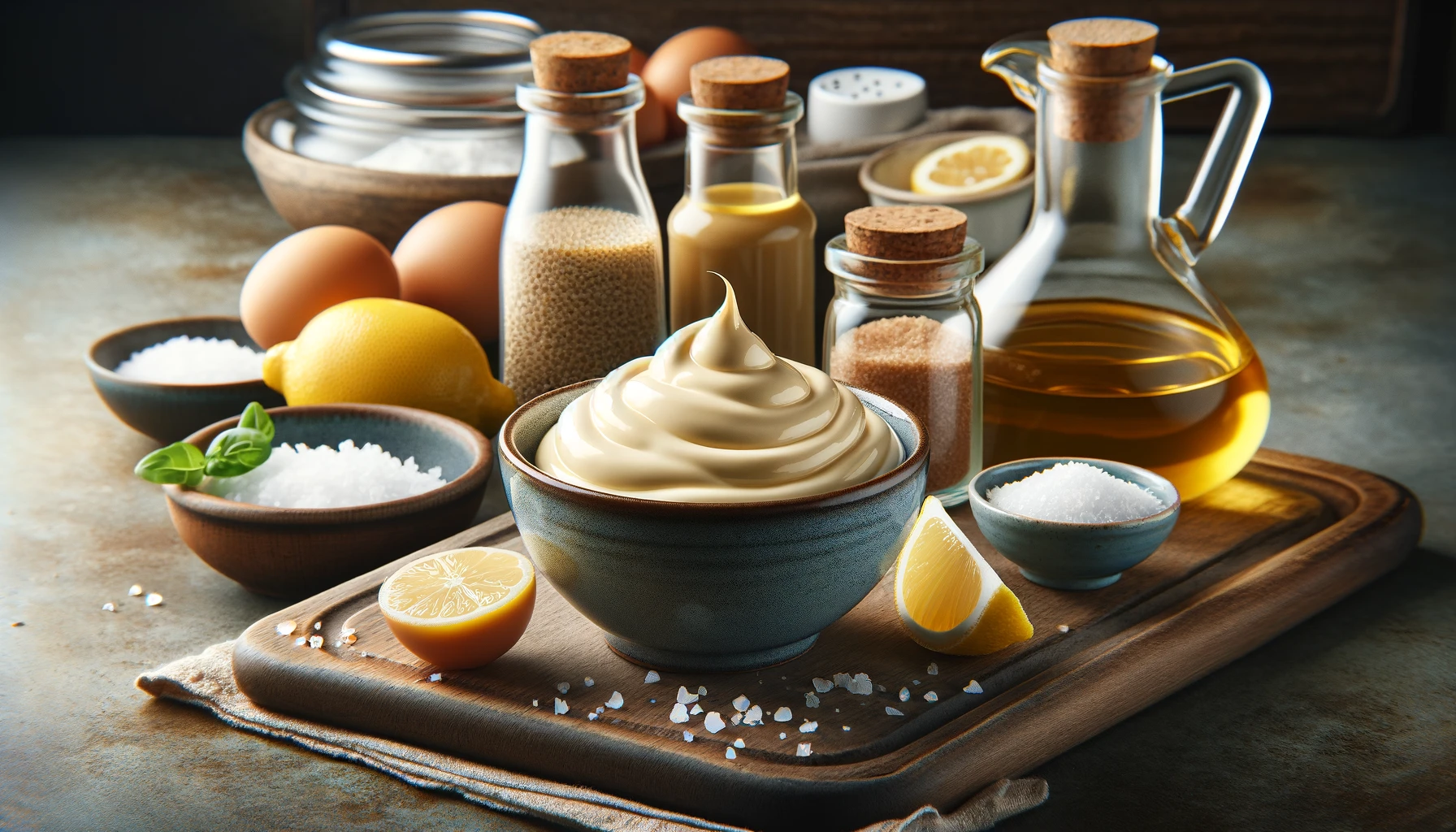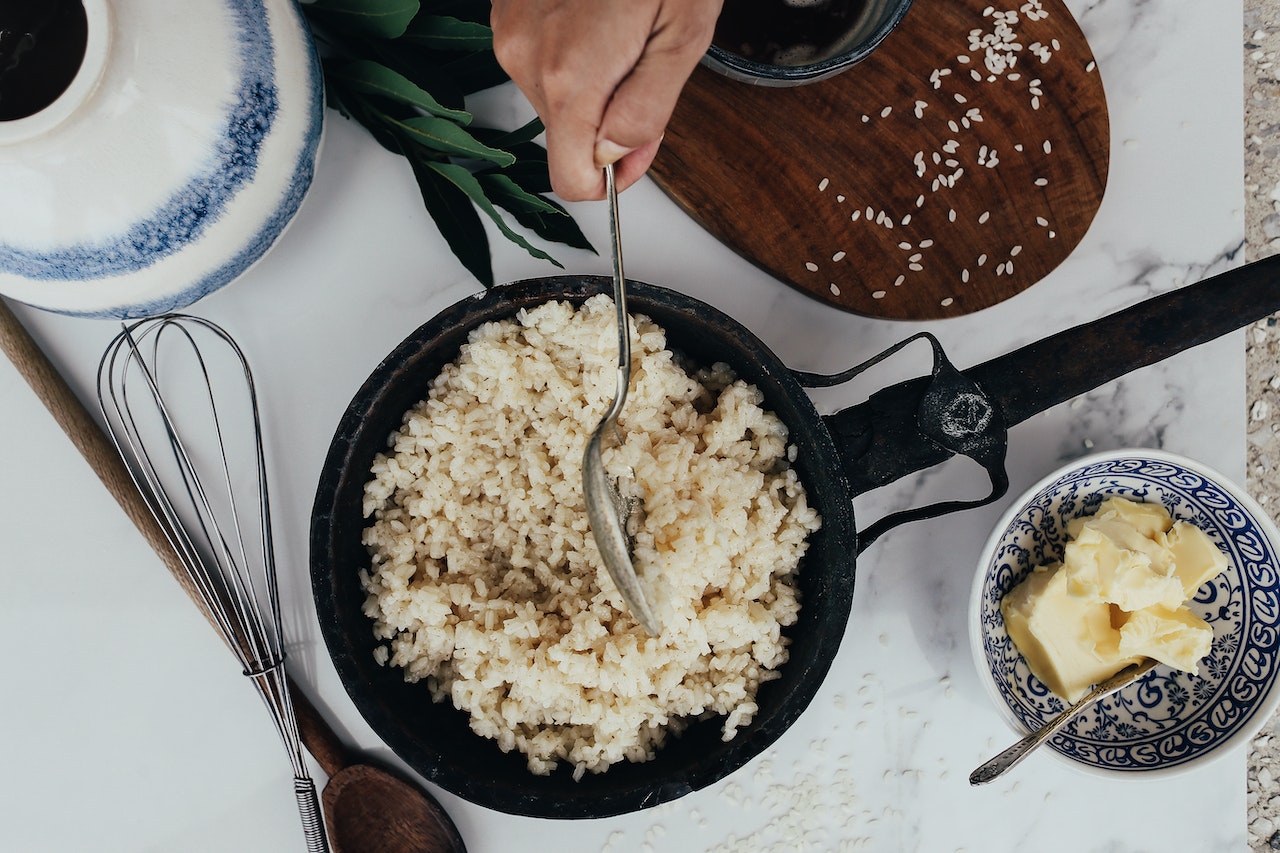So, you’ve finally decided to embark on the journey of making your own mayonnaise? Bravo! It’s the epitome of kitchen chic and the perfect way to impress… absolutely nobody. But hey, once you’ve perfected the art of mayo-making, who needs the approval of others? That jar of creamy white goodness is all the validation you need. So let’s get cracking, and I don’t just mean the eggs.
Ingredients:
- 1 large fresh egg at room temperature. And no, the egg your roommate left in the fridge three weeks ago doesn’t count.
- 1 tablespoon of Dijon mustard. If you only have yellow mustard, well, I guess you can use that if you’re feeling rebellious.
- 1 tablespoon of red or white wine vinegar. If you accidentally sip some wine while making this, we won’t judge.
- 1/4 teaspoon of kosher salt, or just a pinch if you’re trying to be ‘health-conscious’ with your homemade mayo.
- 1 cup (240 ml) of neutral flavored oil, grape seed, safflower, or canola. Please refrain from using that fancy avocado or olive oil unless you want mayo that tastes like a salad.
- 1 teaspoon of lemon juice. Freshly squeezed, if you’re fancy. If you’re lazy, the bottled kind will do, but don’t tell anyone.
Method to the Mayonnaise Madness:
1. The Setup:
This isn’t just about slapping ingredients together. Place that room-temperature egg (remember, not the old one) in a food processor or blender. The more dramatic the appliance, the better. Think of it as giving your mayo a grand stage.
2. Get Saucy:
Pour in the Dijon mustard, wine vinegar, and that tiny bit of salt. This is the base of your mayo, or as I like to call it, the “flavor foundation.” Much like the foundation makeup that’s been sitting in your drawer unused since quarantine began.
3. Blending:
Now, you’re going to want to blend those ingredients until they’re just combined. No, this isn’t a margarita, and over-blending won’t make it any tastier.
4. It’s All About the Drip:
With your food processor running, slowly, and I mean s-l-o-w-l-y, start to drip your oil into the mixture. This isn’t a race, folks. Think of it as one of those dramatic scenes in a movie where the main character is trying to defuse a bomb. One wrong move (or in this case, pour) and BOOM! Mayo disaster.
You’re aiming for a thin stream of oil, almost like how you pour out your feelings in a midnight text to your ex. Once you see the mixture starting to thicken, you know you’re doing it right! If it’s too runny, you’ve either poured too quickly, or you’re just not cut out for the intense world of mayo-making.
5. The Antique Art of Arm-Powered Mayo:
“But wait,” you exclaim, panic-stricken and gazing at your kitchen devoid of any modern machinery. “What if I’m living in the prehistoric era, or, you know, just don’t own a food processor or blender?” Fear not, dear kitchen warrior! You can still whip up this magic concoction using a good old-fashioned bowl and a whisk. That’s right, like your grandma probably did when dinosaurs roamed the Earth. It’s more of a workout — think of it as the universe’s answer to skipping arm day at the gym.
Pour your egg mixture into a large bowl and start whisking vigorously. As you beat those eggs like they owe you money, begin to pour the oil in the same slow, dramatic manner. It’ll take a bit of elbow grease, but it’s a beautiful (albeit tiring) way to achieve that creamy dreaminess. So flex those biceps, channel your inner Julia Child, and show that mayo who’s boss. And if anyone asks, you’re not just making mayo; you’re taking part in a culinary workout routine!
6. Lemon Magic:
Once you’ve successfully incorporated all the oil without any major catastrophes, it’s time to add the lemon juice. It’s like the plot twist in a rom-com; just when you think you know what’s going on, BOOM! Lemon!
By now, you should have a creamy, dreamy, and perfectly emulsified bowl of homemade mayonnaise. If not, well, there’s always the supermarket. At least you gave it a shot, right?
Now that you’re a mayo maestro, go forth and spread the creamy goodness. But first, maybe read the next segment where we’ll dive into the myriad ways you can mess this up (because there are many) and explore a world of flavors that await your new culinary creation.
How to Ruin Your Mayo in Five Easy Steps (Or, What NOT to Do)
Since you’ve bravely embarked on this saucy escapade, let’s make sure you avoid the most common pitfalls. Or hey, if you’re feeling spicy, go ahead and try these blunders to see what happens. Science, right?
- The Cold Egg Fiasco: As mentioned, your egg needs to be at room temperature. If you use a cold egg straight out of the fridge, your mayo will break faster than your resolve to avoid junk food on a Monday. Think of it as your egg giving you the cold shoulder — literally.
- Oil Overload: As tempting as it is to pour that oil like you’re refilling your wine glass on a Friday night, resist the urge. If you add it too fast, your mayo will separate, leaving you with a sad, oily mess. Remember: seduction, not speed.
- The Wrong Oil Mishap: Yes, olive oil sounds posh and healthy, but unless you want mayonnaise that’s strong enough to overpower every other flavor in your sandwich, steer clear. Stick to neutral oils and leave the EVOO for your salads and Instagram pics.
- Blender Burnout: Your blender or food processor is your ally in this endeavor. But if you run it for too long at too high a speed, you risk overheating and breaking your mayo. It’s a delicate dance, much like your attempt at salsa last summer.
- Neglecting Taste Testing: Your mayo might need a dash more of lemon or a pinch more salt. Be sure to taste as you go along, tweaking to get your perfect balance. Just like adjusting the brightness on your selfies until you glow but don’t shine.
Adding a Flavorful Twist to Your Mayonnaise
But wait! There’s more! Once you’ve mastered the basics, it’s time to jazz things up. Ever thought about garlic mayo? Or perhaps a spicy chipotle variant? The world is your oyster (oyster mayo, anyone? Just kidding… or am I?).
- Garlic Delight: Add a clove of finely minced garlic to your mayo base for a taste sensation that’s sure to keep the vampires away. Date night? Maybe skip this one.
- Herbalicious: Fresh herbs like dill, basil, or parsley can elevate your mayo from drab to fab. Just remember to chop them finely — nobody wants to floss after a sandwich.
- Spice it Up: A dash of paprika, some finely chopped chipotle, or even a smidgeon of wasabi can transform your mayo into a zesty treat.
Remember, making mayonnaise is a mix of science, art, and pure unadulterated cheek. So, don your apron, get cracking (again, mostly the eggs), and may(o) your culinary endeavors be ever in your favor!
Pro Tips for Perfecting Your Mayo Mastery:
1. Temperature Control:
- Egg Warmth: Besides ensuring your egg is at room temperature, consider warming your bowl too (if using the whisk method). A slightly warm bowl helps the emulsion process.
2. Oil Pouring Precision:
- Bottle Hack: Use a squeeze bottle for your oil. It gives you more control over the flow, reducing the risk of pouring too much too fast.
3. Flavor Infusions:
- Citrus Zest: Add zest from your lemon for an extra tangy kick. This can brighten the flavor profile without overwhelming the mayo.
- Mustard Varieties: Experiment with different types of mustard for subtle flavor shifts. Grainy mustard can add a nice texture.
4. Texture Troubleshooting:
- Fixing a Broken Mayo: If your mayo splits, don’t panic! Start with a fresh egg yolk in a new bowl and gradually whisk in your broken mayo. It often comes back together.
- Creamier Consistency: For an even creamier texture, add a teaspoon of water at the end. It sounds counterintuitive, but it works!
5. Storage Savvy:
- Shelf Life: Homemade mayo doesn’t have the preservatives of store-bought varieties. Keep it refrigerated and use it within a week.
- Label & Date: Always label your mayo with the date it was made, so you don’t have to guess if it’s still good to use.
6. Health-Conscious Options:
- Egg Alternatives: For those avoiding raw eggs, try pasteurized eggs or egg substitutes.
- Oil Options: While neutral oils are recommended, experimenting with a small portion of flavored oils (like walnut or sesame) can create unique blends for specific dishes.
7. Advanced Flavor Play:
- Smoky Mayo: Add a bit of smoked paprika or a few drops of liquid smoke for a BBQ twist.
- Sweet Surprise: A hint of honey or maple syrup can add an unexpected but delightful sweetness, great for pairing with certain sandwiches or salads.
8. Culinary Creativity:
- Leftover Love: Think beyond sandwiches. Use your mayo in dressings, dips, or as a base for sauces. It’s versatile!
- Seasonal Sensations: Adapt your mayo to the seasons. Add pumpkin spice in fall, fresh mint in summer, or cranberry sauce during the holidays for festive twists.
9. Presentation Perfection:
- Serving Style: Serve your homemade mayo in a quaint jar or a fancy dish when entertaining. It’s a simple touch that adds to the homemade charm.
10. Fun with Food Coloring:
- Colorful Mayo: For special occasions, consider adding a few drops of natural food coloring. Green for St. Patrick’s Day, pink for Valentine’s, etc. It’s a fun way to add an unexpected twist!
Frequently Asked Questions about Homemade Mayonnaise
Absolutely! The traditional way is to use a bowl and a whisk. It takes more elbow grease, but it’s completely doable and, dare I say, quite satisfying.
Homemade mayo doesn’t have the shelf life of store-bought versions due to the absence of preservatives. It’s best to use it within a week and keep it refrigerated.
Yes, but stick to neutral oils like grape seed, safflower, or canola for the base. You can experiment with a small amount of flavored oils for different tastes, but be cautious as they can easily overpower the mayo.
There’s a small risk of salmonella with raw eggs. To minimize this, use fresh, high-quality eggs, or pasteurized eggs. Always store your mayo in the refrigerator.
This usually happens if the oil is added too quickly. Mayo is all about the slow incorporation of oil into the egg mixture. Don’t fret though; you can try fixing it by whisking in a fresh egg yolk into the runny mayo.
Yes! Replace the egg with plant-based alternatives like soy milk or aquafaba (the liquid from canned chickpeas) for a vegan version.
Homemade mayo is a blank canvas. Enhance its flavor with a pinch more salt, extra mustard, or even a splash of vinegar or lemon juice. Taste as you go!
Freezing mayo isn’t recommended as it can separate and change texture. It’s best enjoyed fresh.
Yes, overmixing can cause the mayo to break down and separate. Blend just until it reaches the right consistency.
Beyond sandwiches and salads, use it in dressings, dips, as a base for various sauces, or even in baking for extra moist cakes.



